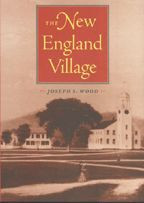
Reviews
An important corrective to studies of urban design based upon the metropolis.
Very effectively suggests ways to extend the work of architectural historians, geographers, historians, and planners alike.
Carefully researched, fine-grained analysis.
Delivers valuable detail about two minor cities in a critical period of economic change. Excellent maps and a fine selection of illustrations enhance the package significantly.
Among the most significant recent developments in the humanities and social sciences is the 'spatial turn' that scholars have taken... Shaw's new book represents an important step in this paradigm shift.
With skill and imagination, Shaw provides a synthesis of architectural, social, and urban history that yields important insights on the intricacies of city building at a formative stage in the United States. Her work is a model of its kind, affording lessons that far transcend the period and places that are her focus. This book should be essential reading for scholars concerned with the urban environment today no less than in the past.
Diane Shaw shows us what is significant and distinctive about the small cities that are often overlooked by historians. She draws urban geography, architectural history, and social life into an intimate and fresh portrait of the dreams, successes, and failures of the men and women who created them.
With this lively and original analysis of Syracuse and Rochester, New York, Diane Shaw takes us—literally and figuratively—into the heart of the nearly 2,000 new middle-sized cities that Americans built in the nineteenth-century. Correcting conventional assumptions based only on the expansion of colonial seacoast centers, Shaw convincingly shows us how business leaders in the interior of the country rethought the role and design of cities and wove a new vernacular urbanism of carefully-sorted commercial, industrial, and civic areas and buildings. Everyone interested in nineteenth-century American architecture and urbanism needs to read this book!
Book Details
Acknowledgments
Chapter 1. Vernacular Urbanism and the Mercantile Network of New Cities
Chapter 2. Planning the Sorted City: Commercial, Industrial, and Civic Districts
Chapter 3. Building the Sorted
Acknowledgments
Chapter 1. Vernacular Urbanism and the Mercantile Network of New Cities
Chapter 2. Planning the Sorted City: Commercial, Industrial, and Civic Districts
Chapter 3. Building the Sorted City: The Three Epitome Districts
Chapter 4. Refining the Sorted City: Appearances in the Commercial District
Chapter 5. Gentrifying the Sorted City: Social Sorting in the Commercial District
Chapter 6. The Reynolds Arcade and Athenaeum
Chapter 7. Transportation and the Changing Streetscape
Notes
Index




